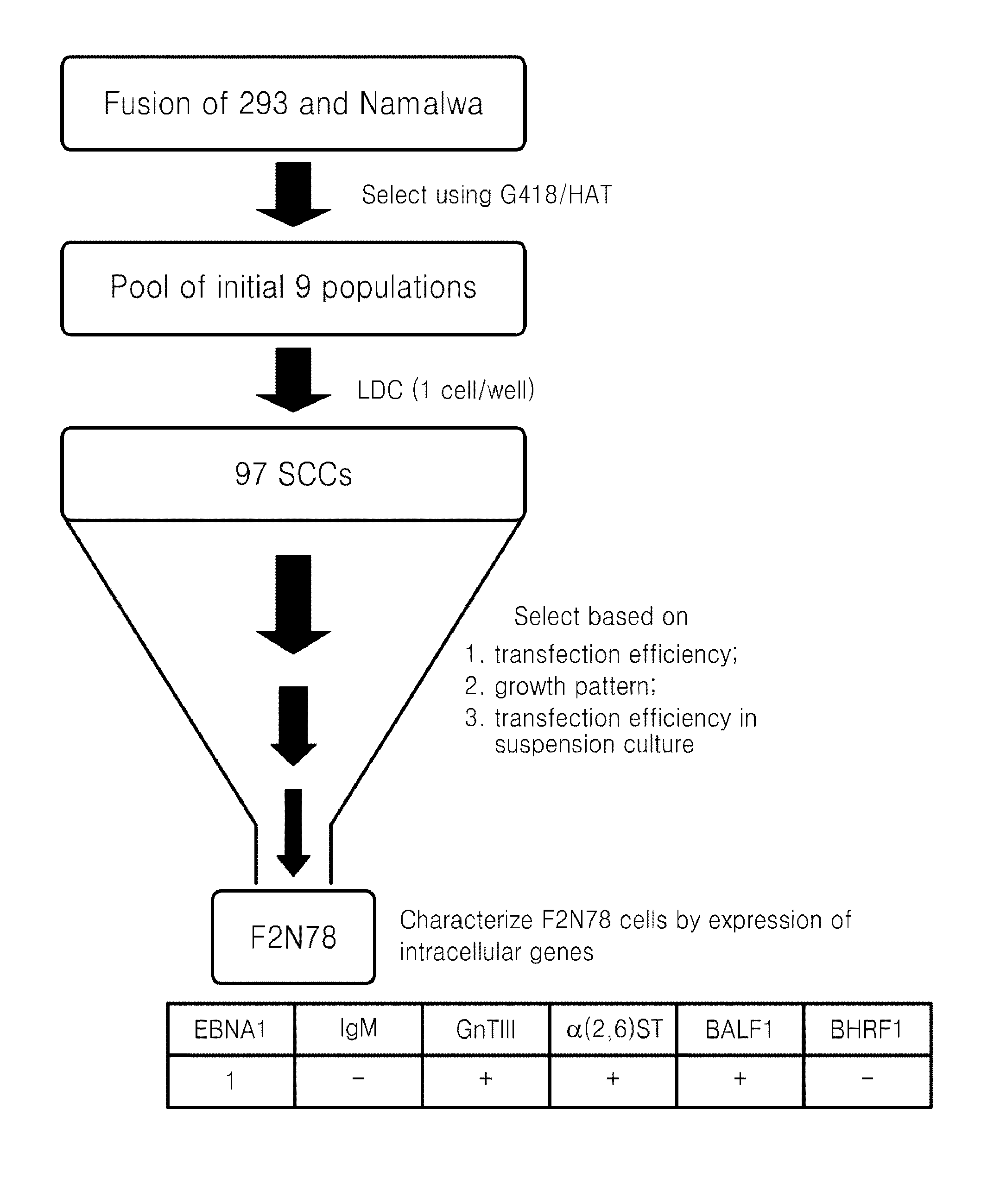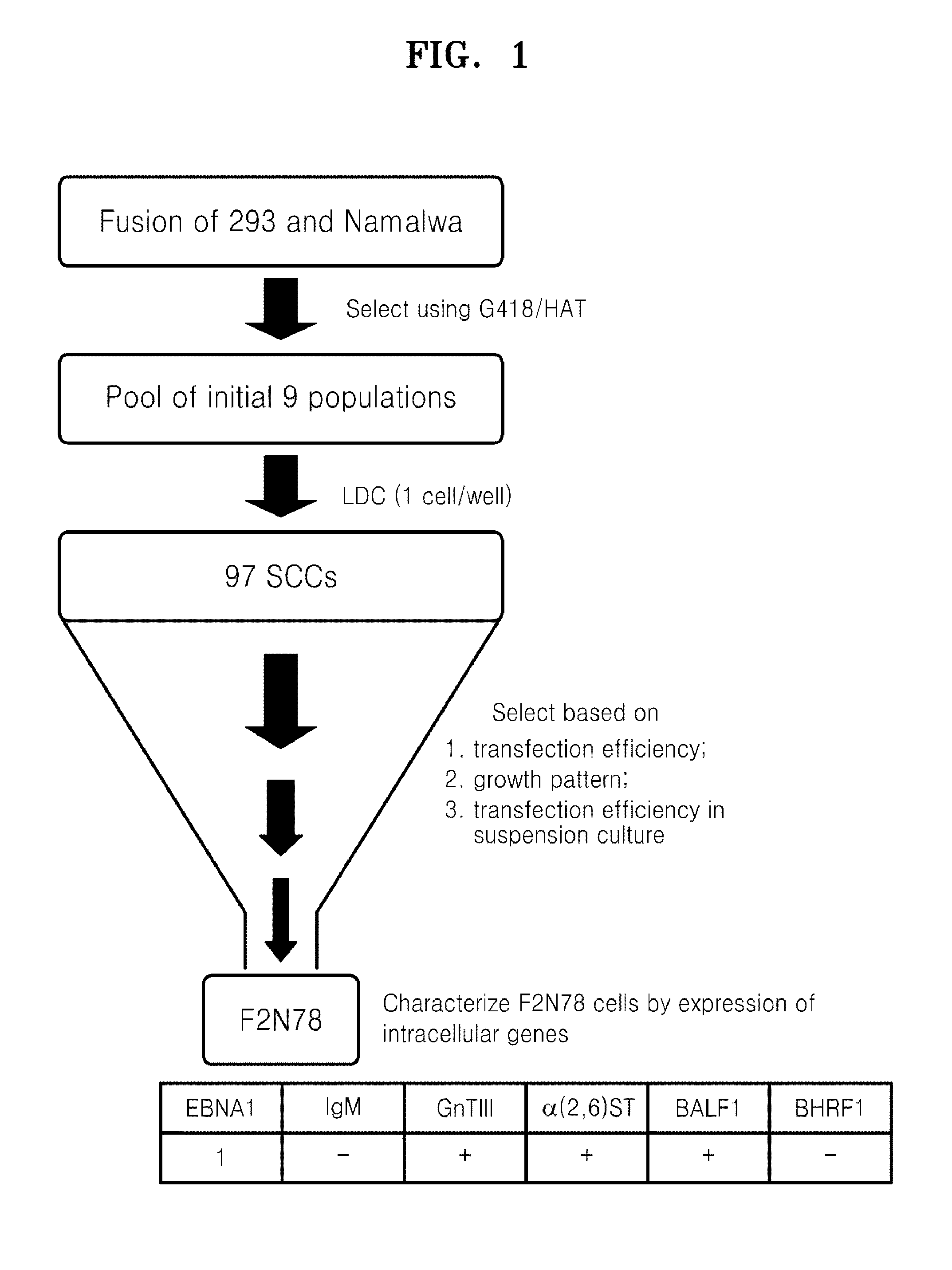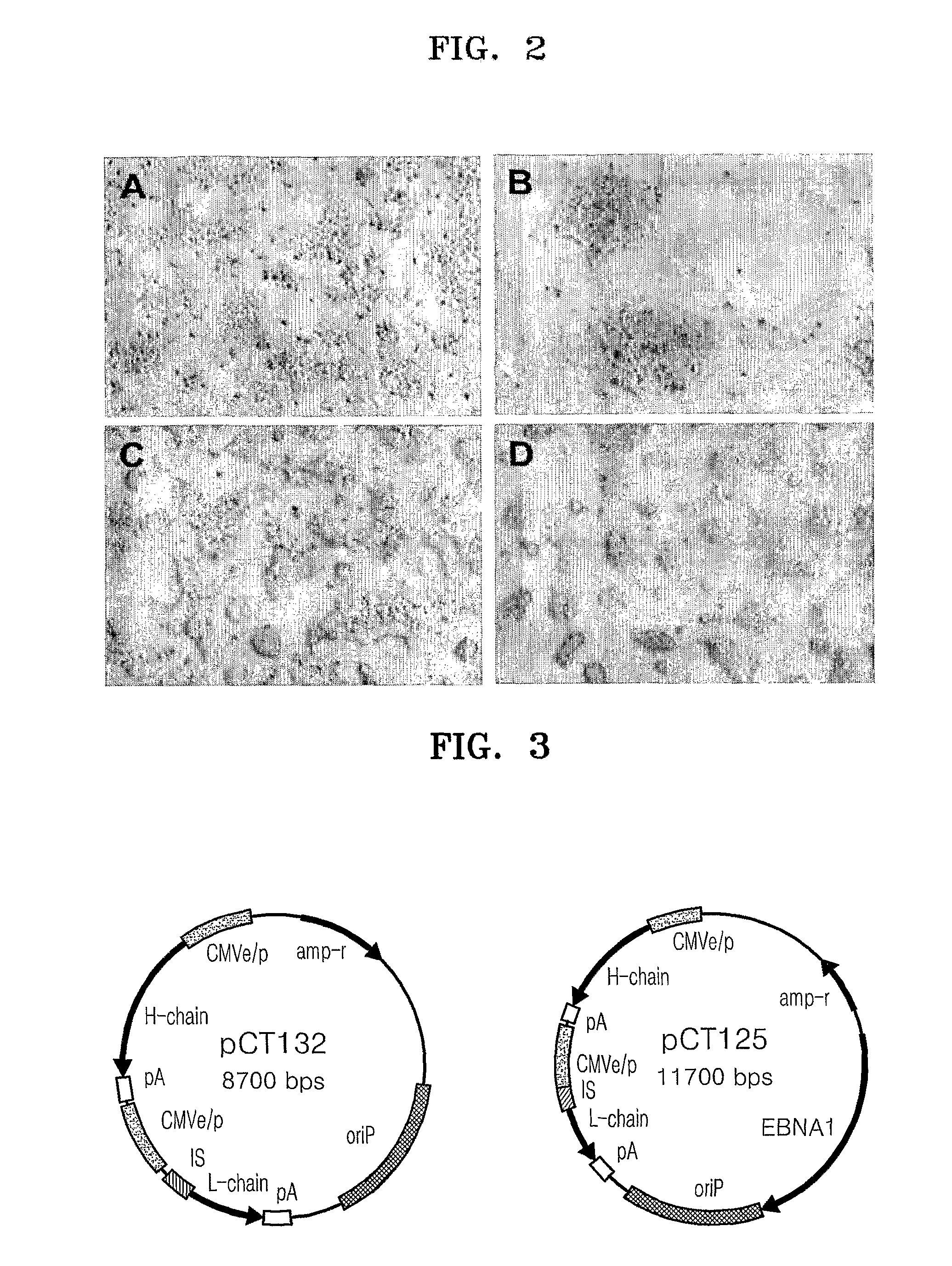Human host cell for producing recombinant proteins with high quality and quantity
a human host cell and recombinant protein technology, applied in the field of human host cells for producing recombinant proteins with high quality and quantity, can solve the problems of hkb cell ebv tended to be lost, and the inability to preserve various beneficial properties for effective expression of heterologous genes, etc., to achieve high quantity and quality, and production in a short period of time
- Summary
- Abstract
- Description
- Claims
- Application Information
AI Technical Summary
Benefits of technology
Problems solved by technology
Method used
Image
Examples
example 1
Generation of Human Somatic Hybrid Cell Line by Cell Fusion
[0060]Namalwa cell was cultured in RPMI1640 medium supplemented with 10% FBS (Hyclone, SH30070.03) and 6-thioguanine (Sigma, A4660) to generate a HAT(Sigma, H0262)-sensitive and G418(Calbiochem, 345810)-resistant cell as a fusion's partner. During a selection period of 4 months, the Namalwa cell was treated with growing concentrations of 6-thioguanine from 5 μg / ml to 30 μg / ml, and sensitivity of the cell to a 1×HAT-containing medium was identified. The HAT-sensitive Namalwa cell population was transfected with pSV2neo plasmid, and then cells having resistance to G418 (1.5 mg / ml) were selected to be used as the fusion's partner.
[0061]The cell fusion was performed using polyethyolene glycol (PEG) according to a method disclosed in Kennett R H (Cell fusion in Methods Enzymol 58:345-359; 1979). 293 cells (4×106) and Namalwa cells (6×106) in the logarithmic growth phase, were washed twice with a calcium (Ca2+)- and magnesium (Mg2...
example 2
Further Characterization of F2N78 Clones
[0062]Seventeen clones showing high level expression of IgG were subject to a second screening (See FIGS. 4A and 4B). One of the best clones, F2N78, was compared for IgG production with 293 cell in the transient transfection assays using the pCT132 vector. As a result, it was found that the IgG expression rate of the F2N78 cell was 2 to 3 times higher than that of the 293 cell in repeated assays (See FIG. 4C).
[0063]On the other hand, 7 out of the 17 single cell clones, which were selected based on IgG expression efficiency, were adapted to grow in serum free suspension culture. The continuous expression of EBNA1 was identified in the 7 single cell clones, which had been adapted to grow in serum free suspension culture. It indicates that these 7 clones also harbor an EBV genome. As shown in FIG. 5, almost 100% of the F2N78 cell population which had grown for more than 1 year under serum free culture conditions was positive for EBNA1 expression....
example 3
[0065]A transient transfection has been used to produce, in a short period of time, protein required to develop a new drug. For this, a F2N78 cell and a 293 cell suspension-cultured in FreeStyle 293 medium were transfected with two oriP expression vectors having different structures; pCT132 and pCT125, to compare antibody productivities. pCT125 includes an EBNA1 coding sequence in plasmid, while pCT132 does not contain the EBNA1 coding sequence in plasmid.
[0066]As shown in FIG. 7, IgG productivity was similar in the transfected F2N78 with both vectors in repeatedly performed transfections, while IgG production in the transfected 293 with pCT125 was higher than that with pCT132. Furthermore, the amount of IgG produced by the F2N78 cell transfected with pCT132 (equal to or greater than 25 μg / ml) was greater than that produced by the 293 cell transfected with pCT125 (15 μg / ml). Thus, the efficiency of IgG production by the pCT132 (without EBNA1 gene) in the transf...
PUM
| Property | Measurement | Unit |
|---|---|---|
| concentration | aaaaa | aaaaa |
| concentrations | aaaaa | aaaaa |
| time | aaaaa | aaaaa |
Abstract
Description
Claims
Application Information
 Login to View More
Login to View More - R&D
- Intellectual Property
- Life Sciences
- Materials
- Tech Scout
- Unparalleled Data Quality
- Higher Quality Content
- 60% Fewer Hallucinations
Browse by: Latest US Patents, China's latest patents, Technical Efficacy Thesaurus, Application Domain, Technology Topic, Popular Technical Reports.
© 2025 PatSnap. All rights reserved.Legal|Privacy policy|Modern Slavery Act Transparency Statement|Sitemap|About US| Contact US: help@patsnap.com



